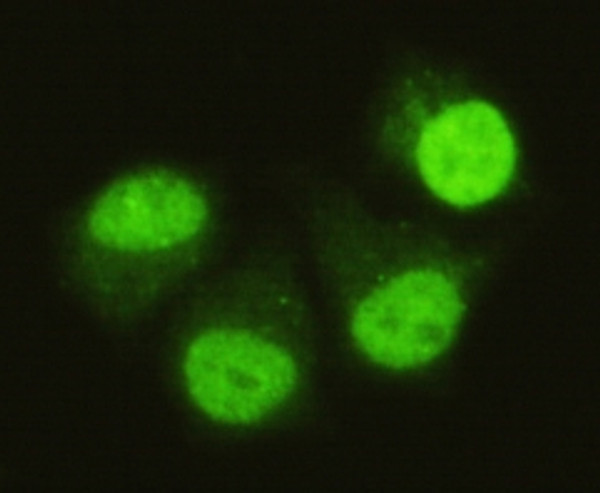| Post Translational Modifications | Phosphorylated on serine by BMP (bone morphogenetic proteins) type 1 receptor kinase. Ubiquitin-mediated proteolysis by SMAD-specific E3 ubiquitin ligase SMURF1. |
| Function | Transcriptional regulator that plays a role in various cellular processes including embryonic development, cell differentiation, angiogenesis and tissue homeostasis. Upon BMP ligand binding to their receptors at the cell surface, is phosphorylated by activated type I BMP receptors (BMPRIs) and associates with SMAD4 to form a heteromeric complex which translocates into the nucleus acting as transcription factor. In turn, the hetero-trimeric complex recognizes cis-regulatory elements containing Smad Binding Elements (SBEs) to modulate the outcome of the signaling network. Non-phosphorylated SMAD5 has a cytoplasmic role in energy metabolism regulation by promoting mitochondrial respiration and glycolysis in response to cytoplasmic pH changes. Mechanistically, interacts with hexokinase 1/HK1 and thereby accelerates glycolysis. |
| Protein Name | Mothers Against Decapentaplegic Homolog 5Mad Homolog 5Mothers Against Dpp Homolog 5Jv5-1Smad Family Member 5Smad 5Smad5Hsmad5 |
| Database Links | Reactome: R-HSA-201451 |
| Cellular Localisation | CytoplasmNucleusMitochondrionCytoplasmic In The Absence Of LigandMigrates To The Nucleus When Complexed With Smad4 |
| Alternative Antibody Names | Anti-Mothers Against Decapentaplegic Homolog 5 antibodyAnti-Mad Homolog 5 antibodyAnti-Mothers Against Dpp Homolog 5 antibodyAnti-Jv5-1 antibodyAnti-Smad Family Member 5 antibodyAnti-Smad 5 antibodyAnti-Smad5 antibodyAnti-Hsmad5 antibodyAnti-SMAD5 antibodyAnti-MADH5 antibody |
Information sourced from Uniprot.org











